-
Smartphone turned into handheld biosensor
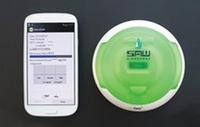
Scientists and physicians in the field could soon run on-the-spot tests for environmental toxins, medical diagnostics, food safety and more with their smartphones. Researchers have developed a cradle and app for the iPhone that uses the phone’s built-in camera and processing power as a biosensor to detect toxins, proteins, bacteria, viruses, and other molecules.
-
-
Senator Hatch champions tech industry’s priorities in immigration reform

As the Senate Judiciary Committee continues to consider the bipartisan immigration reform bill, both supporters and opponents of the bill agree that one senator has emerged as a key voice on the issue: the 79-year old Orrin Hatch (R-Utah). Hatch has emerged as a champion of the U.S. technology industry, and while he supports the broad goal of immigration reform, he insists on shaping the legislation so it addresses the priorities and preferences of the tech industry, priorities and preferences which he sees as essential not only for the health of the industry, but for the health of the U.S. economy more generally.
-
-
Compressing air for renewable energy storage
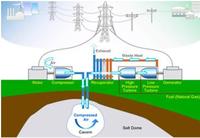
Enough Northwest wind energy to power about 85,000 homes each month could be stored in porous rocks deep underground for later use, according to a new, comprehensive study. Researchers identified two unique methods for this energy storage approach and two eastern Washington locations to put them into practice.
-
-
Quickly identifying chemical, biological warfare agents
For more than fifty years, researchers have been studying exactly how aspirin affects the human body. Despite thousands of publications on the topic, our understanding is still incomplete. Meanwhile, novel chemical and biological weapons have historically been mass produced within a year of discovery. Using current methods and technologies, researchers would require decades of study to gain a robust understanding of how new threat agents exert effects on human biological systems. DARPA wants to close this capability gap, which leaves U.S. forces vulnerable.
-
-
Terahertz technology helps to see more with less
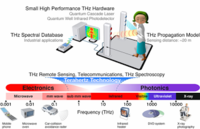
Terahertz technology is an emerging field which promises to improve a host of useful applications, ranging from passenger scanning at airports to huge digital data transfers. Terahertz radiation sits between the frequency bands of microwaves and infrared radiation, and it can easily penetrate many materials, including biological tissue. The energy carried by terahertz radiation is low enough to pose no risk to the subject or object under investigation.
-
-
Seeking new ideas for mobile ad hoc networks (MANETs)
Troops operating in forward locations without telecommunication infrastructure often rely on a mobile ad hoc network (MANET) to communicate and share data. A constraint with current MANETs is they can only scale to around fifty nodes before network services become ineffective. DARPA is exploring new technologies unencumbered by Internet Protocols (IP) which could be the key to enabling large MANETs. The Internet facilitated far-reaching technical advances, but in this technology area the Internet may be the roadblock.
-
-
Smartphone app locates gunfire source
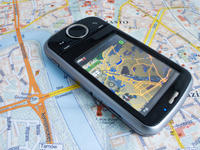
For the last decade, the Department of Defense has spent millions of dollars to develop sophisticated sniper location systems which are installed in military vehicles and require dedicated sensor arrays. Scientists have now developed a smartphone app that tracks gunfire and points in the direction the shot came from.
-
-
New fertilizer can be used to grow food – but not build bombs
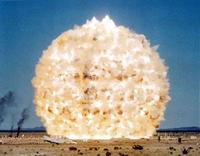
Ammonium nitrate fertilizer is used in agriculture, but when mixed with a fuel such as diesel, it is highly explosive. It was used in about 65 percent of the 16,300 homemade IEDs in Afghanistan in 2012.About 1,900 troops were killed or wounded in IED attacks in 2012, 60 percent of American combat casualties. There have been more than 17,000 global IED incidents in 123 countries in the past two years. Timothy McVeigh used ammonium nitrate in Oklahoma City in 1995. Scientists have developed a fertilizer that helps plants grow but cannot detonate a bomb.
-
-
DOE seizes $21 million from Fisker after company fails to make monthly payment on loan
The administration seized $21 million from auto company Fisker Automotive, less than a month after the automaker laid off three quarters of its employees due to financial and production problems. Fisker, based in Anaheim, California, was awarded a $192 million loan as part of a program started by the Obama administration to boost electric cars and other alternative-fuel vehicles.
-
-
Winner announced in the first DARPA FANG Challenge
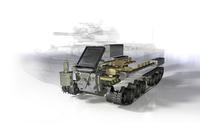
The Ground Systems team outpaces more than 200 teams and 1,000 participants, submitting the winning mobility in the Fast Adaptable Next-Generation Ground Vehicle (FANG) Mobility/Drivetrain Challenge, and drivetrain subsystem design and claiming the $1 million prize.
-
-
New submarine hunting program reaches milestones
DARPA’s Distributed Agile Submarine Hunting (DASH) Program has tested two complementary prototype systems as part of its Phase 2 development effort. The prototypes demonstrated functional sonar, communications, and mobility at deep depths. The successful tests furthered DASH’s goals to apply advances in deep-ocean distributed sonar to help find and track quiet submarines.
-
-
DARPA shows smaller pixels, smaller thermal cameras for soldiers
The U.S. military uses long-wave infrared (LWIR) cameras as thermal imagers to detect humans at night. These cameras are usually mounted on vehicles as they are too large to be carried by a single soldier and are too expensive for individual deployment. DARPA researchers, however, recently demonstrated a new five-micron pixel LWIR camera that could make this class of camera smaller and less expensive.
-
-
Robot makes inspecting power lines simple, inexpensive
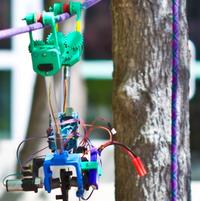
Mechanical engineers invented a robot designed to scoot along utility lines, searching for damage and other problems that require repairs. Made of off-the-shelf electronics and plastic parts printed on an inexpensive 3D printer, the SkySweeper prototype could be scaled up for less than $1,000, making it significantly more economical than the two models of robots currently used to inspect power lines.
-
-
Footwear safety reflectors help in detecting bioterror threats
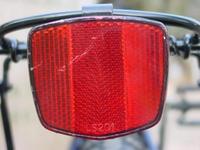
Tiny versions of the reflectors on sneakers and bicycle fenders that help ensure the safety of runners and bikers at night are moving toward another role in detecting bioterrorism threats and diagnosing everyday infectious diseases, scientists said the other day.
-
-
Future computers will identify users by thoughts, not passwords

Instead of typing your password, in the future you may only have to think your password, according to researchers. A new study explores the feasibility of brainwave-based computer authentication as a substitute for passwords.
-
More headlines
The long view
New Technology is Keeping the Skies Safe
DHS S&T Baggage, Cargo, and People Screening (BCP) Program develops state-of-the-art screening solutions to help secure airspace, communities, and borders
Factories First: Winning the Drone War Before It Starts
Wars are won by factories before they are won on the battlefield,Martin C. Feldmann writes, noting that the United States lacks the manufacturing depth for the coming drone age. Rectifying this situation “will take far more than procurement tweaks,” Feldmann writes. “It demands a national-level, wartime-scale industrial mobilization.”
How Artificial General Intelligence Could Affect the Rise and Fall of Nations
Visions for potential AGI futures: A new report from RAND aims to stimulate thinking among policymakers about possible impacts of the development of artificial general intelligence (AGI) on geopolitics and the world order.
Keeping the Lights on with Nuclear Waste: Radiochemistry Transforms Nuclear Waste into Strategic Materials
How UNLV radiochemistry is pioneering the future of energy in the Southwest by salvaging strategic materials from nuclear dumps –and making it safe.
Model Predicts Long-Term Effects of Nuclear Waste on Underground Disposal Systems
The simulations matched results from an underground lab experiment in Switzerland, suggesting modeling could be used to validate the safety of nuclear disposal sites.
